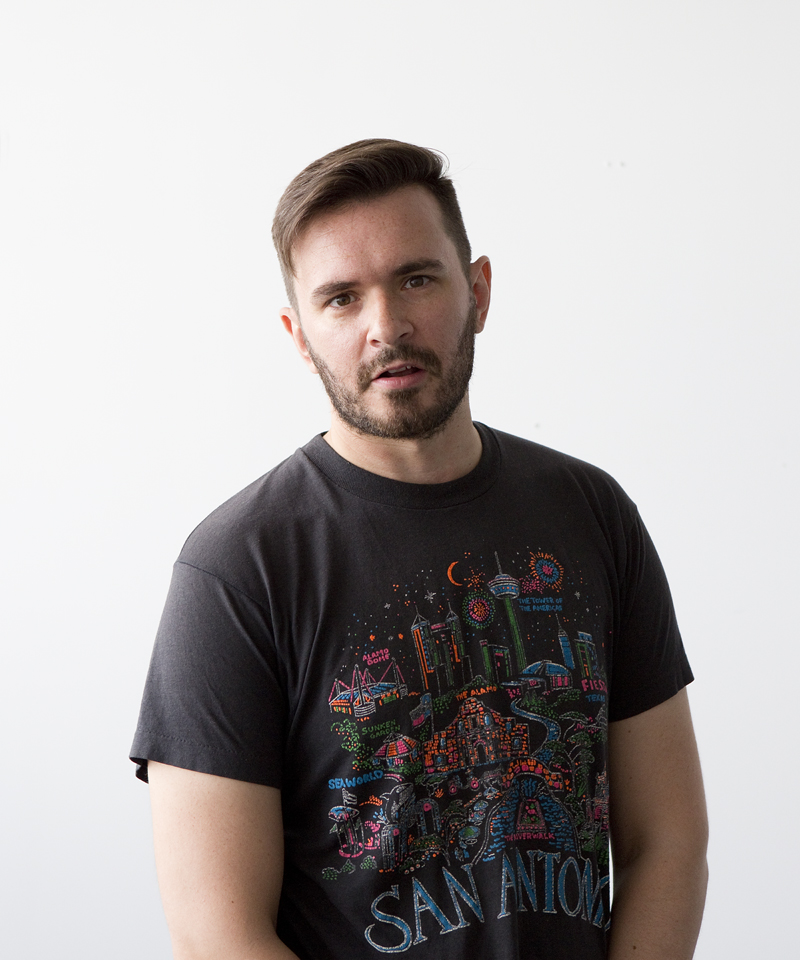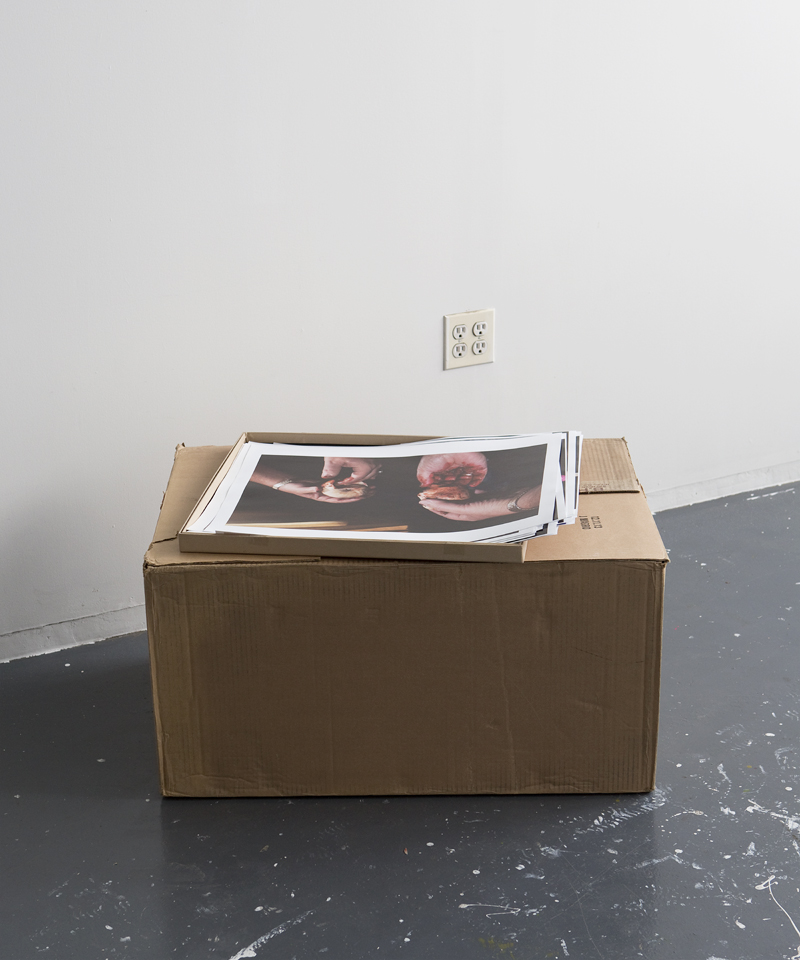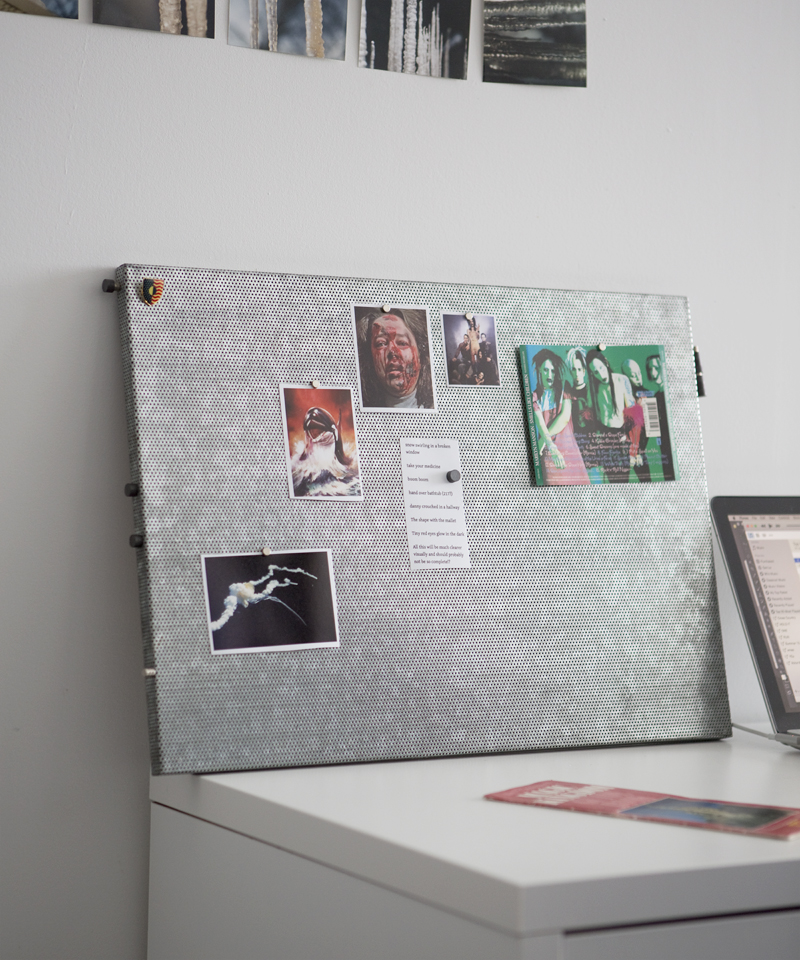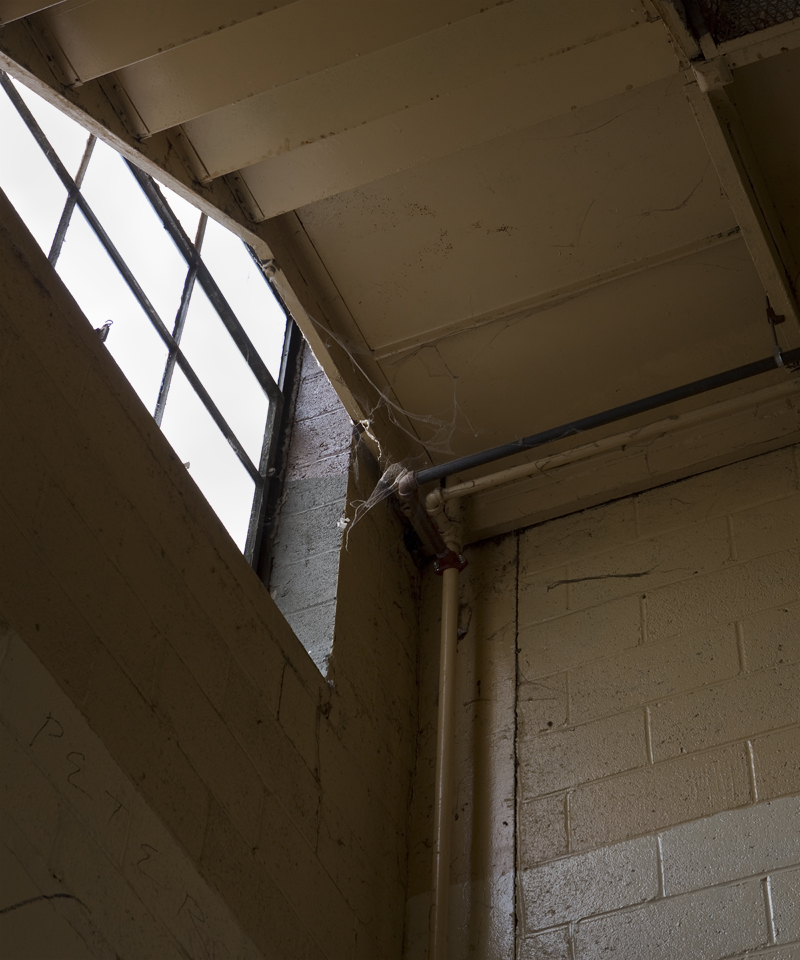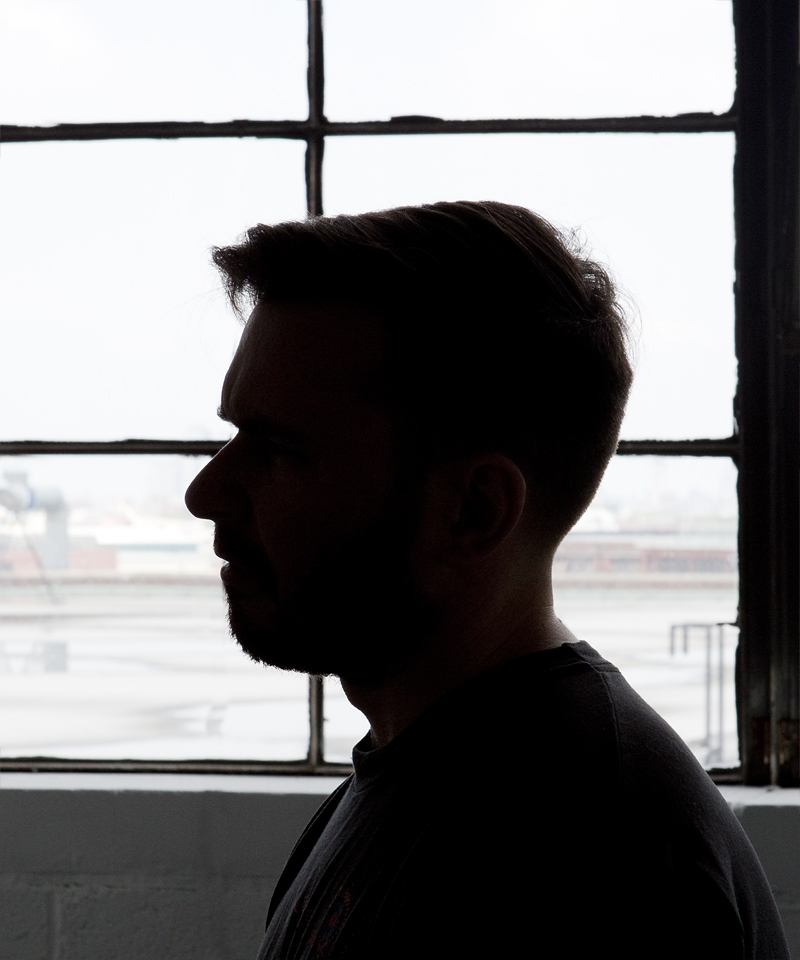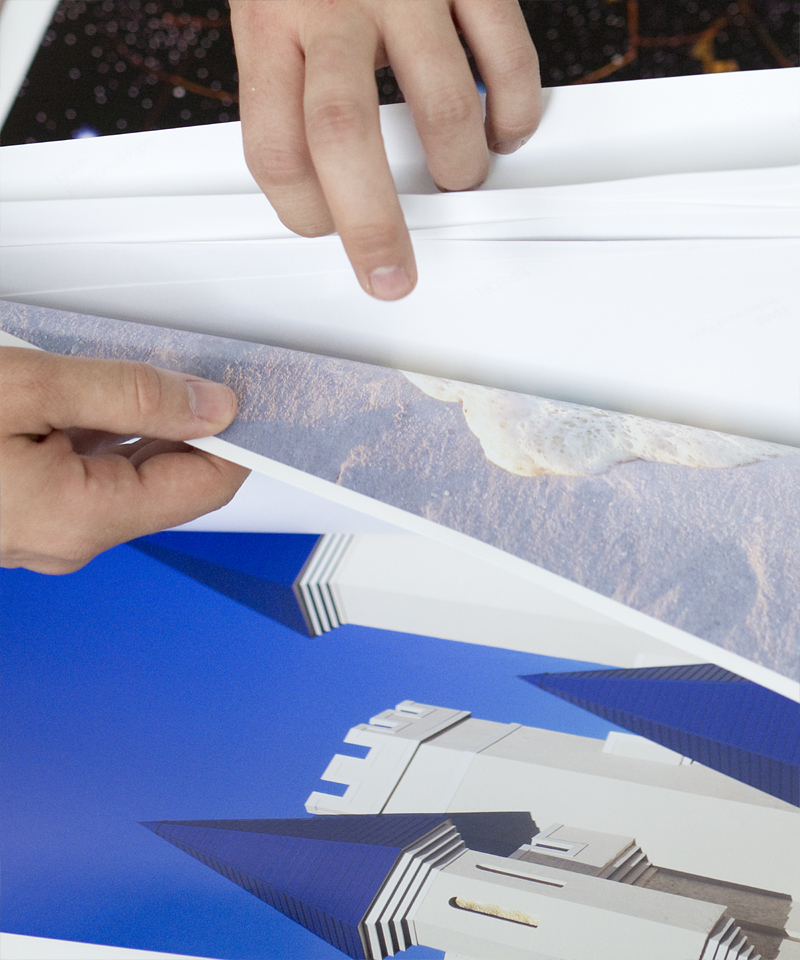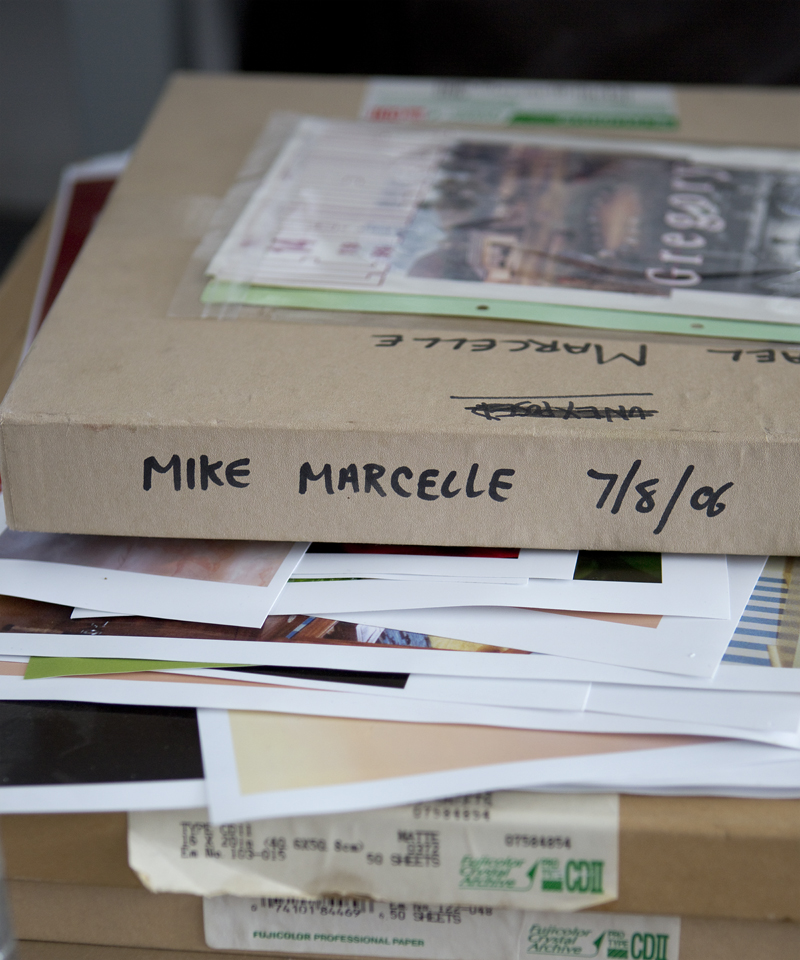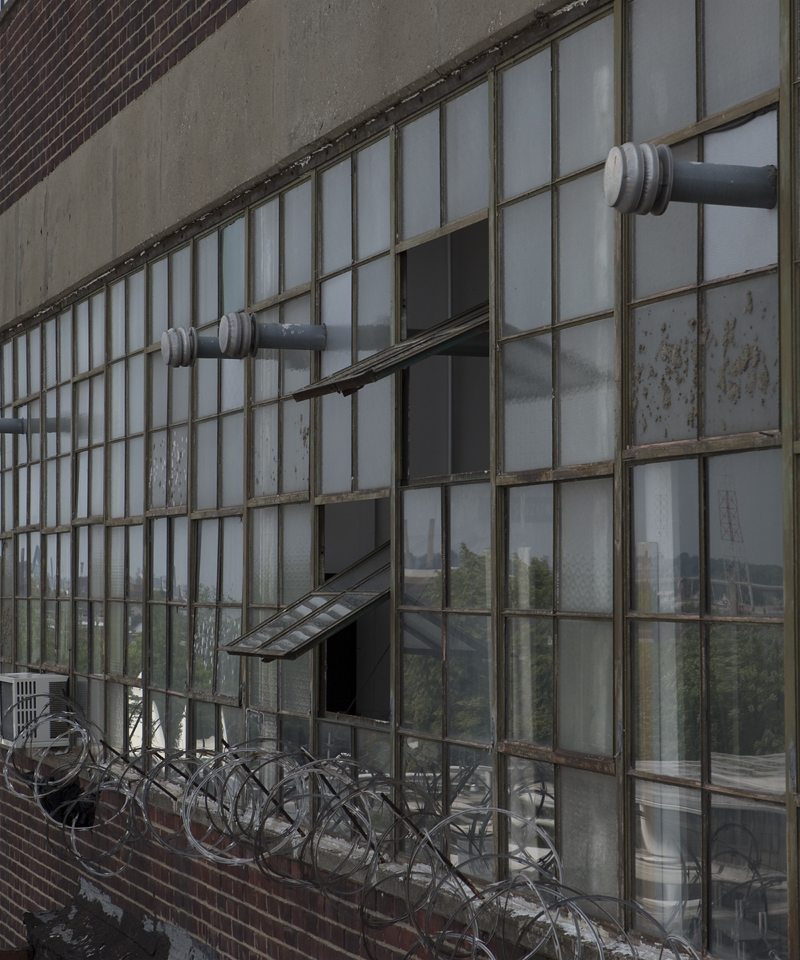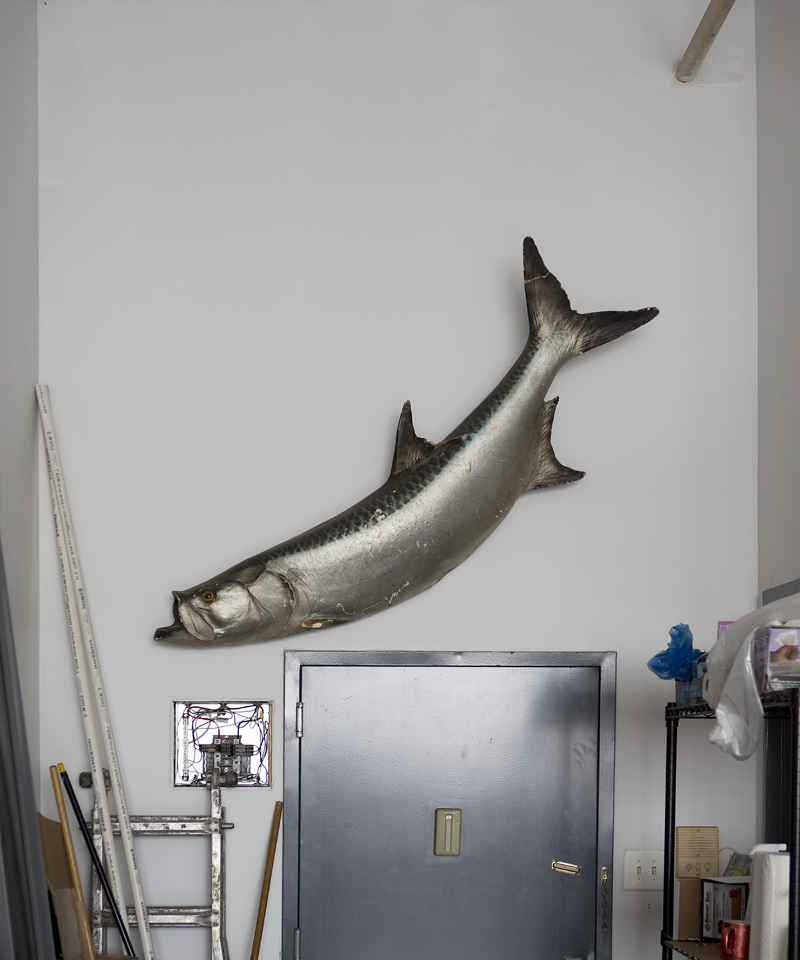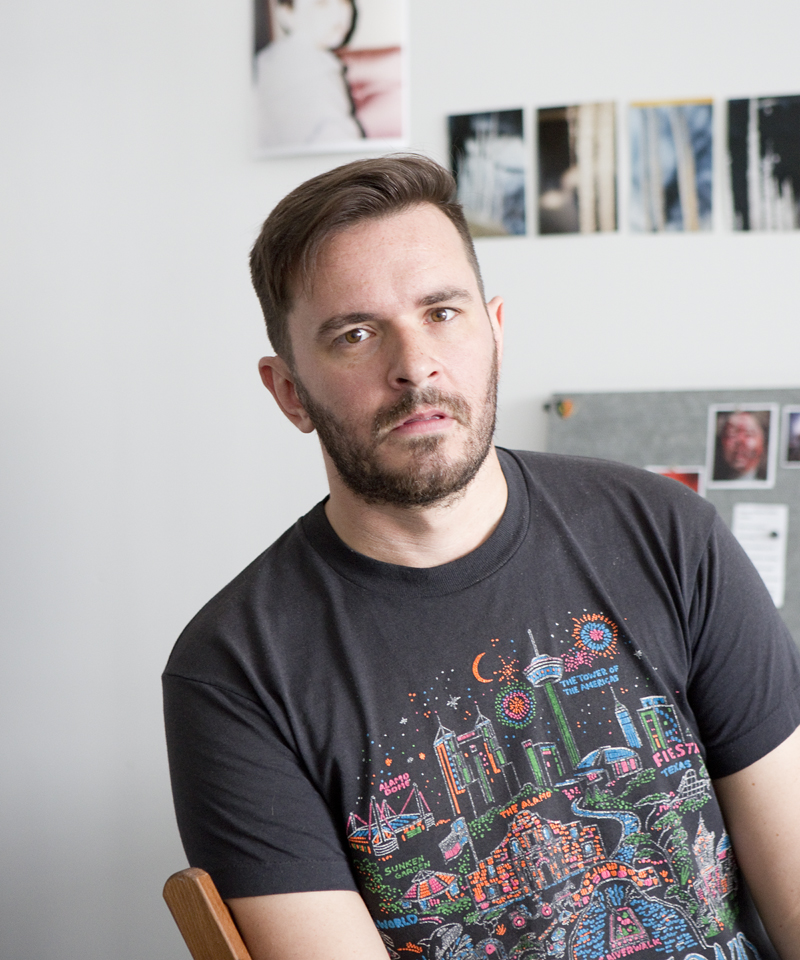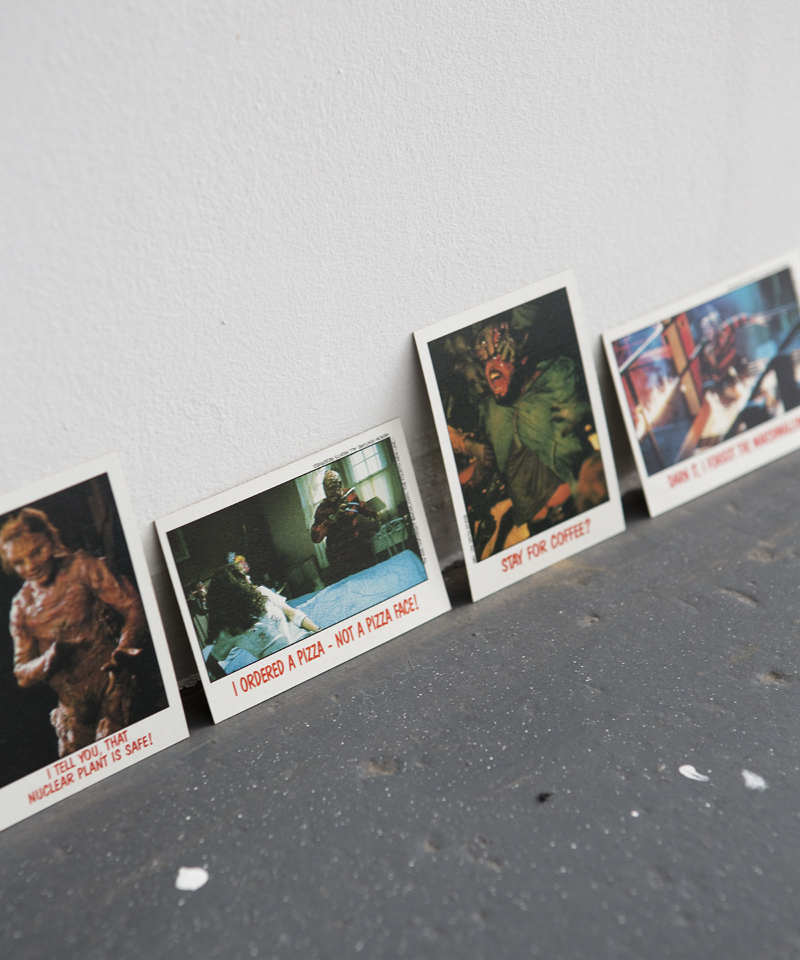Studio Visit – Michael Marcelle
Romke Hoogwaerts (RH): Damn, that’s a long hallway, it’s cool. How is the building?
Michael Marcelle (MM): It’s good actually. It’s really good. It’s a little expensive but it’s in a good spot.
RH: Yeah, as every place is in New York these days right? … Wow, this is a nice space!
MM: Yeah right?
RH: Who do you share it with?
MM: Well actually, right now I’m the only one here but there’s going to be two more people soon.
RH: How’s your morning been so far?
MM: Good good. I’ve just been here actually, doing some work.
RH: So, when did you start shooting? Was it something you did when you were younger?
MM: Yeah, so my father was a hobbyist. We always had a dark room in the basement and I would shoot very casually in high school and then I went to Bard College. I’m happy I chose a school that had a really good photography department, which was a coincidence because I was only 18, I had no idea.
RH: Yeah I thought every school would be great! I thought, I don’t care, I’ll just pick one! That’s great, Bard is a great place. Then you went to Yale, right? You did your MFA, which is even more distinguished. I think it’s probably one of the more highly esteemed MFA programs of photography. How was that?
MM: It was great! I think having gone to Bard, Yale was kind of engrained in me as an option at a really early age. It was always a goal I was hoping for. But they often say you should spend some time out in the world in between an undergrad and grad because I think that the department wants to know that you’ll continue to make work, not just as homework.
RH: Right. It has to be built on life, in a way, you can’t just construct it out of nowhere. I remember studying film back in the day and you’d have all these young and budding screenwriters writing all these movies based on… what? You have to have life experiences! [laughs]
Anyway, did you ever have any words of wisdom that you learned at school from a teacher that really stuck with you?
MM: Yeah, I think overall the ethos of the school was to work all the time. If you’re having an issue, don’t really think about it, just work through it and you’ll get the answer that way. Because you can often, well I can often feel paralysed by analysing things and it’s a lot easier if I just work. That is the thing that I learnt in school.
RH: That’s really cool. Your series Third Skin, was that work that you were making at Yale?
MM: It’s kind of a continuation of that work. Since school and even really through undergrad, I always made work at home and about home and I think the only real aspect of it that’s changed is the way that the work is created. But it’s always been about home. So, the work I made at school is called Kokomo.
RH: And while you were there, Hurricane Sandy hit.
MM: Yeah, so I had to make the work at home and then the hurricane hit and all of a sudden this huge tragedy hit the whole area and I didn’t really have access anymore. I couldn’t even travel home anymore and it became this really complicated issue of wanting to make work about it but not wanting to make work that’s just about the destruction.
So I would end up home a lot, actually in my parents house because I couldn’t get around. Their house became a studio in a way. It became a way to construct work when I didn’t have any other options. I also became really interested in the hurricane as tearing a hole in space and time, where it created this alternate reality. That was when I think the work really hit this stride of fusing all of my interest in horror films and sci-fi films. Whereas earlier I would talk a lot about my influences but I didn’t know how to fuse it into my work.
RH: Do you see that work being a series of individual narratives or is it one large narrative?
MM: I think it’s one narrative that’s constantly regenerating itself. A lot of the work is about genetic mutation and how all the people in the work are constantly changing into these new individuals. How the hurricane created this constant flux of space of time; to where the future and the past are all fusing into this one space. So it’s a flattening of time. It’s like every narrative happened at once. Which is kind of odd!
RH: Do you want to talk to me about Kenneth Anger?
MM: [laughs] Of course! Always, yeah.
RH: Cool. So, when did you first encounter his work?
MM: I first encountered him probably at the end of high school, which was just the right timing. I think as a preteen I was really into Marilyn Manson; I was a goth kid. Even after I came out of that phase I was still interested in the pageantry of that music.
Then I discovered Kenneth Anger and I thought he was a really incredible fusion of all the things I was interested in. Kind of like obtuse, occult imagery and this real pop interest.
I think above all he has a real interest in pop. I think in a way he set the tone for MTV. It’s really cool to see the way that he turned queerness into not a thing where you’re feeling oppressed but where you can thrive in it and create your own world. That was really inspiring… and he just looks awesome!
RH: Yeah. I don’t know if i’ve seen everything he’s done, but it definitely makes a big impression… You also said that you really like horror movies.
MM: Yeah, so I think overall out of all of my influences as an artist, horror is the core of it. People ask me about it a lot and they relate to it either as camp or as horror being frightening. I don’t really view it as either. I’m interested in horror as being in a way the most highly aestheticised of all film genres.
RH: That makes sense because so much of it is visual, whereas with comedy..
MM: …Well comedy can be visually played out but you can do it with dialogue. There are so many films nowadays that are just dialogue and you can’t do that with horror, it has to be aesthetic.
RH: That’s true. That’s a good point. What are some of your favourites?
MM: Probably Texas Chainsaw Massacre, The Shining (obviously), Hysteria is a huge one, that one’s really changed my life! What else.. Halloween also.
RH: Did you watch them when you were a kid?
MM: Yeah, I watched them a ton as a kid. So I don’t really shoot any horizontal photos and I would get railed on at school constantly and I didn’t know why but then it hit me, because as a kid I would go to the rental store and I would go to the horror department and look at the boxes for hours. All of the boxes are vertical, so I think that that’s a really huge early imprint on me. I do think that my work is highly referencing film promotional materials.
RH: So walk us through your new work. Is this new stuff?
MM: A couple of them are new. I don’t have a ton of it cos its all super in process. but I have a couple of new ones. These two are new.
RH: How did you build these?
MM: Well they’re kind of unaltered, which is.. complicated.
RH: Do you use a filter here?
MM: I do.
RH: To get the shine?
MM: Yeah. It’s actually a filter that my dad had from the early 80s. So it’s actually from that era.
RH: That’s cool, so what’s going on in this photo?
MM: So that’s something I shot for Vice magazine. It’s this artist named Thomas Altheimer; a Danish artist whose work is about changing his identity. So I took a projector and I had his image projected back on to him so that he became this weird mutant.
RH: What is the photograph that you’re most proud of?
MM: Good question! I mean, I think in terms of when things changed for me I was half way through school and I made this image.
This is an image that I made of the sky in my parents backyard. So I had been trying to actually be in the backyard and it didn’t really work, so I had this idea to just construct a diorama. I think up until that point I hadn’t really been constructing anything, I was still in that traditional way of photography. It was really really hard but I think it really worked and I think it was the first time that it captured what I was trying to go for.
RH: So is it a double exposure?
MM: No no, so actually it’s just a construction that I made in my apartment.So it’s actually all shot inside. It took a really long time.
RH: Great photo.
MM: Oh cool, thanks very much.
{looking through images}
RH: Cool, I feel like i recognise a lot of these. This one’s so great! So gruesome. Who’s the subject?
MM: Uh, it’s my dad.
RH: So your dad is clearing out a snail’s shell. Is that the snails blood?
MM: Yeah, he hates that image. Which I think he has a right to.
RH: Haha. I read in an interview that your mother isn’t a big fan.
MM: No she’s not a big fan. I mean she’s been very supportive and actually every time she hears that I’ve said said ‘oh she hates the work’, she always says ‘I don’t actually hate the work!’. But she’s not really in it a lot, as you can see. It’s actually been a helpful chance of coming up with a way of putting her in the work without actually having her in it.
There’s this one image that I made in school… [Looks for image] So she’s really into candles and she has a lot of them at home. Actually now I am too, it’s kind of rubbed off on me.
I was trying to take a picture of her and she just wouldn’t allow me to. So I took all her old candles and made a plaster cast of my head. So it is a picture of me but I think ultimately it’s about her. Yeah it’s kind of helpful to have that challenge.
RH: Yeah having resistance in a way is really good. It’s always good to have something to work against. It’s not a rejection, it’s a good thing. Do you have any siblings?
MM: Yeah I have one older sister.
RH: Oh yeah the picture without the nose, right?
MM: Yeah, she’s in it a lot actually. She actually has been incredible. When we were younger we didn’t really get along that well and I think this work has really helped us become a lot closer. She’s always happy to be involved, she’ll challenge me and have these ideas which are really weird and I’m uncomfortable with and she’ll be right a lot of times.
RH: Cool. What do you see yourself doing in the next couple of years?
MM: You know, it’s funny, I think I’m still into this work (personal work). I think i’m going to do a little more editorial, which is interesting because I never really thought that I would. Or I thought as the work got stranger and stranger, it would be a lot harder to get editorial but it’s actually helped a lot. It becomes easier for an editor to know what you can do in a really particular way.
MM: So you’re working on that in New York?
MM: Yeah. It’s been really awesome.
RH: This view is so great.
MM: Yeah, that’s the highlight of the whole space. It’s also got this outdoor space.
RH: Do you have access to that?
MM: Yeah, do you want to go look at it?
RH: Let’s do it!
[walking to roof]
Max Marshall (Photographer): It’s funny hearing about the photo that you have the most connection with because I think it was the first photo of yours that I’d ever seen. I’d never really made sense of it in the context of the rest of your work because it looked like this technical feat of setting up a tripod, I was completely fooled! and in the same sense I didn’t understand what it had to do with anything else in your work. In terms of like, setting up these studio type scenarios, but now it makes a lot more sense! [laughs].
MM: [laughs] Well cool!
Max Marshall: I always wondered why you never made anything else like that but that was just my own misconception with the photo!
RH: You know, I think the reason I like your work, partly, is because I feel like (and there’s other artists who work in this frame) it exists in this intangible world that’s separated from our universe. It’s as though we’re living in this kind of bizarre world that’s constructed in our own way; we all kind of live online now and I don’t know if I want to bring that into it, in the sense of the shot of the stars. Those stars are constructed; that’s not our real universe but in a way we do live in this surreal space, where it’s…
MM: Constructed.
RH: Yeah and very colourful and mixed up. I love it for that reason.
MM: Oh cool, thanks man. I think that there’s a scrappiness to the work in a way, where it can look polished but I think it ultimately also looks a little bit like a cheap horror film in that you can see that there are props. I was really interested in using all of the materials of home; like the candle wax and stuff, as a way to make a new thing with what was around and not get too high tech.
RH: Do you ever engage with the internet and your photography? Do you have a line that you don’t cross?
MM: I mean, I just joined Instagram. I was a real late adopter to that. I think I’m just as involved as anyone else, but I’m not particularly interested. I think that the work has a very digital quality, which I think speaks to that screen aesthetic.
RH: Do you ever have an interest in doing video?
MM: I’ve thought about it. I think the reason (I don’t) is that the work only works because it’s not film and because it’s kind of abstracting and elevating those images into these stills.
Also at school I tried. I made one, and they were not happy! [laughs]. I remember Collier Schorr, who usually would allow me some space to screw up and with the video she was like “It’s just not working!”. So I thought, “Ok! I’ll never do it again!”
She was right, it was actually.. it was so grad school. I asked my dad to talk about if I could make an image of him however he wanted. He started talking about how he wanted me to make a picture of him in a chair and there was a spirit holding him and it was kind of about spirituality. He was talking about this while in the background that song by Haddaway, uhh.. ‘What Is..’
RH: ‘What Is Love’?
MM: Yeah, ‘What Is Love’, playing in the car on the radio.
RH: So it was your dad’s fault? [laughs]
MM: [laughs]
RH: Cool, well thanks for having us!
MM: Nice to meet you guys.
RH: It’s a total pleasure.
Photographs by Max Marshall

